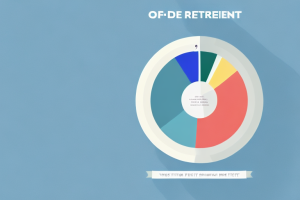Retirement planning is a crucial aspect of financial well-being, and determining a decent retirement amount is a key component of this process. It involves analyzing various factors and setting realistic goals to ensure a comfortable and secure retirement.
Understanding retirement planning
Retirement planning is the process of setting aside funds and making investments to sustain your lifestyle after you stop working. This involves assessing your current financial situation, estimating your retirement expenses, and calculating your retirement income needs.
One important aspect of retirement planning is determining your retirement goals. These goals can include factors such as the age at which you want to retire, the lifestyle you want to maintain, and any specific financial milestones you want to achieve. By setting clear goals, you can better align your savings and investment strategies to meet your desired retirement outcomes.
Factors to consider when determining your retirement amount
When determining a decent retirement amount, it’s essential to consider various factors. These include your desired retirement lifestyle, living expenses, healthcare costs, inflation, and years in retirement. Understanding these factors will help you make informed decisions about your retirement savings and investment strategies.
One important factor to consider when determining your retirement amount is your desired retirement lifestyle. This includes the activities, hobbies, and travel plans you envision for your retirement years. If you plan to live a more luxurious lifestyle, you may need a larger retirement amount to support your desired standard of living. On the other hand, if you plan to live a more modest lifestyle, you may be able to get by with a smaller retirement amount.
Another factor to consider is the impact of inflation on your retirement savings. Over time, the cost of living tends to increase due to inflation. Therefore, it’s important to account for inflation when determining your retirement amount. You may need to adjust your savings goals to ensure that your retirement savings can keep up with the rising cost of living.
Setting realistic retirement goals
Setting realistic retirement goals is crucial to ensure you have sufficient funds to maintain your desired lifestyle during your retirement years. Consider factors such as your current age, expected retirement age, and your desired annual income. Keep in mind that it’s advisable to aim for a retirement amount that provides a financial cushion to account for unexpected expenses and emergencies.
Additionally, it’s important to regularly review and reassess your retirement goals as your financial situation and life circumstances may change over time. This can help you make any necessary adjustments to your savings and investment strategies to stay on track towards achieving your retirement goals. Consulting with a financial advisor can provide valuable guidance and expertise in this process.
Assessing your current financial situation
Assessing your current financial situation is a critical step in determining your retirement amount. Evaluate your current savings, investments, and other assets. Additionally, consider any outstanding debts or financial obligations. This assessment will give you a clear picture of where you stand financially and what steps you need to take to reach your retirement goals.
It is important to note that assessing your current financial situation should not be a one-time event. As your life circumstances change, such as getting married, having children, or changing jobs, it is crucial to regularly reassess your financial situation. This will help you make necessary adjustments to your retirement plan and ensure that you stay on track to meet your goals. Remember to review your financial situation at least once a year or whenever there are significant changes in your life.
Estimating your retirement expenses
Estimating your retirement expenses is an essential part of retirement planning. Consider factors like housing costs, healthcare expenses, travel plans, hobbies, and daily living expenses. It’s crucial to have a comprehensive understanding of your potential costs during retirement to accurately calculate the retirement amount you require.
One important factor to consider when estimating your retirement expenses is inflation. Over time, the cost of goods and services tends to increase due to inflation. It’s important to account for this when calculating your retirement amount, as the purchasing power of your money will decrease over the years.
Another factor to consider is the potential need for long-term care. As you age, there is a higher likelihood of needing assistance with daily activities or medical care. Long-term care expenses can be significant, so it’s important to factor in the potential costs when estimating your retirement expenses.
Calculating your retirement income needs
Calculating your retirement income needs is another crucial step in determining a decent retirement amount. Consider potential sources of income, such as Social Security benefits, pensions, annuities, and any other investments. Assess how much these sources will contribute to your retirement income and determine if there’s a shortfall that needs to be covered by your retirement savings.
It’s important to take into account your expected expenses during retirement when calculating your income needs. Consider factors such as housing costs, healthcare expenses, travel plans, and any other lifestyle choices you anticipate. By estimating your future expenses, you can better determine how much income you will require to maintain your desired standard of living.
Additionally, it’s crucial to factor in inflation when calculating your retirement income needs. Over time, the cost of living tends to increase, meaning that the purchasing power of your retirement savings may decrease. It’s advisable to account for inflation in your calculations to ensure that your income will be sufficient to cover your expenses throughout your retirement years.
Exploring different retirement savings options
Once you have assessed your financial situation and determined your retirement income needs, it’s essential to explore different retirement savings options. These can include employer-sponsored retirement accounts like 401(k)s or 403(b)s, traditional and Roth IRAs, and personal savings accounts. Consider the benefits and limitations of each option and choose the ones that align with your financial goals.
One popular retirement savings option is a 401(k) plan, which is typically offered by employers. With a 401(k), you can contribute a portion of your pre-tax income, and some employers may even match a percentage of your contributions. This can be a great way to save for retirement while also taking advantage of potential tax benefits and employer contributions.
Another option to consider is a traditional or Roth IRA. A traditional IRA allows you to contribute pre-tax income, which can potentially lower your taxable income for the year. On the other hand, a Roth IRA uses after-tax income, but withdrawals in retirement are tax-free. Both types of IRAs offer various investment options, allowing you to choose how your money is invested.
Choosing the right investment strategy
Choosing the right investment strategy is vital for growing and maintaining your retirement savings. Consider factors such as your risk tolerance, investment timeline, and financial goals. Consult with a financial advisor to develop an investment strategy that balances risk and potential returns. Diversification can also play a crucial role in mitigating risk and maximizing long-term success.
One important factor to consider when choosing an investment strategy is your risk tolerance. Some individuals are comfortable with taking on higher levels of risk in order to potentially achieve higher returns, while others prefer a more conservative approach. Understanding your own risk tolerance can help guide your investment decisions and ensure that you are comfortable with the level of risk you are taking on.
Another key consideration is your investment timeline. The length of time you have until retirement can impact the types of investments you choose. Generally, individuals with a longer investment timeline can afford to take on more risk and potentially benefit from higher returns over time. On the other hand, if you have a shorter investment timeline, you may want to focus on more stable and low-risk investments to protect your savings.
Evaluating the impact of inflation on your retirement amount
Inflation can significantly impact your retirement savings, as the cost of living tends to rise over time. When determining a decent retirement amount, it’s essential to account for inflation’s potential effects. Consider historical inflation rates, as well as your expected retirement timeline, to adjust your retirement goals accordingly.
The importance of diversification in retirement planning
Diversification is vital in retirement planning to mitigate risks and increase the probability of consistent returns. By allocating your retirement savings across different asset classes, both domestic and international, you reduce the impact of market volatility on your portfolio. Diversification provides a level of security and stability within your retirement investments.
Maximizing Social Security benefits for a better retirement
Maximizing your Social Security benefits can have a significant impact on your retirement income. Understanding the rules and regulations surrounding Social Security is crucial. Consider factors such as your claiming age, spousal benefits, and the impact of continuing to work while receiving benefits. By strategizing your Social Security claiming strategy, you can optimize your retirement income.
Planning for unexpected expenses in retirement
It’s crucial to plan for unexpected expenses that may arise during retirement. This can include healthcare emergencies, home repairs, or unforeseen financial burdens. Maintaining an emergency fund can provide a safety net to cover these unexpected costs and ensure that your retirement savings remain intact.
Balancing risk and reward in your retirement portfolio
Balancing risk and reward is essential when managing your retirement portfolio. While higher-risk investments may offer the potential for greater returns, they also come with increased volatility. On the other hand, lower-risk investments may provide more stability but limited growth potential. Consider your risk tolerance and long-term goals when allocating your retirement savings across different investment options.
Considering healthcare costs in retirement planning
Healthcare costs can be a significant expense during retirement. It’s crucial to factor in potential medical expenses, including insurance premiums, prescription drugs, and long-term care costs. Research different healthcare insurance options and consider purchasing long-term care insurance to provide financial protection from high medical expenses.
Making adjustments to meet changing retirement needs
Your retirement goals and needs may change over time. Remember to review and make adjustments to your retirement plan periodically. Life events such as marriage, having children, or unexpected financial obligations can impact your retirement savings. By regularly assessing your retirement plan and making necessary adjustments, you can stay on track to achieve your retirement goals.
Strategies to catch up on retirement savings if you’re behind
If you find yourself behind on retirement savings, there are strategies that can help you catch up. These include increasing your savings rate, making catch-up contributions to retirement accounts once you reach age 50, and considering options for additional income in retirement. Consult with a financial advisor to develop a personalized plan tailored to your circumstances.
Tips for increasing your retirement savings over time
Increasing your retirement savings over time is crucial for a comfortable retirement. Consider strategies such as consistently contributing to retirement accounts, taking advantage of employer matching contributions, and minimizing unnecessary expenses. By making intentional choices to prioritize saving for retirement, you can steadily increase your retirement savings and reach your financial goals.
Seeking professional advice for a solid retirement plan
When it comes to determining a decent retirement amount, seeking professional advice can be invaluable. A financial advisor can provide personalized guidance based on your unique circumstances and goals. They can help you develop a solid retirement plan and navigate the complexities of retirement savings, investments, and other financial considerations.
In conclusion, determining a decent retirement amount requires careful consideration of various factors. By understanding retirement planning, setting realistic goals, assessing your financial situation, estimating expenses, and understanding investment strategies, you can make informed decisions to secure a comfortable retirement. Remember to regularly review and adjust your retirement plan as factors evolve over time. Seek professional advice when necessary to ensure a solid retirement plan tailored to your needs.



